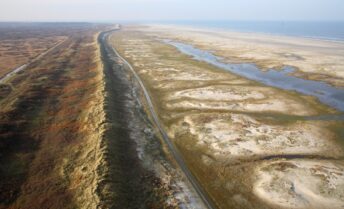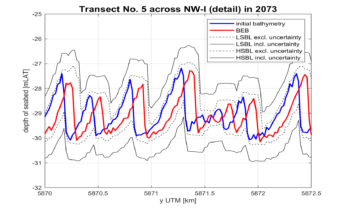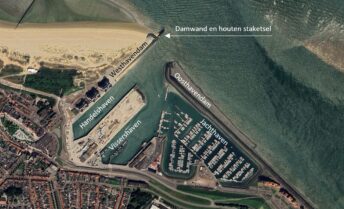MORPHOLOGY
Morphology is the dynamic interplay between changing seabed and sediment transport. Waves and currents are the driving forces behind sediment transport. Variations in sediment transport then lead to changes in the seabed, which in turn influence waves and currents.
Svašek Hydraulics has extensive experience in predicting and simulating morphology: sediment transport and seabed changes. Cohesive sediments, non-cohesive sediments, their combination, and the interaction between them, wave-driven sediment transport in cross-shore and along-shore directions, and sedimentation in harbor basins or access channels – Svašek Hydraulics is ready to assist.
Quick expert judgments and 1D model analyses are sometimes sufficient, but for accurate morphological predictions, we use our own software FINEL or open-source software like XBeach or TUDflow3D.
Our morphological knowledge and analyses are often applied for:
- Optimal coastal protection design or nourishment strategy,
- Morphology studies within the framework of a Hydraulic Assessment (with or without the Delft3D DVR SMT model),
- Dredging optimization for minimal sedimentation in a harbor or access channel,
- Prediction of sediment plumes, for example, in the context of an Environmental Impact Assessment (EIA).
learn more about our morphology expertise?
Please contact Ype Attema.
Ype Attema
Lead coastal morphology

Related projects




